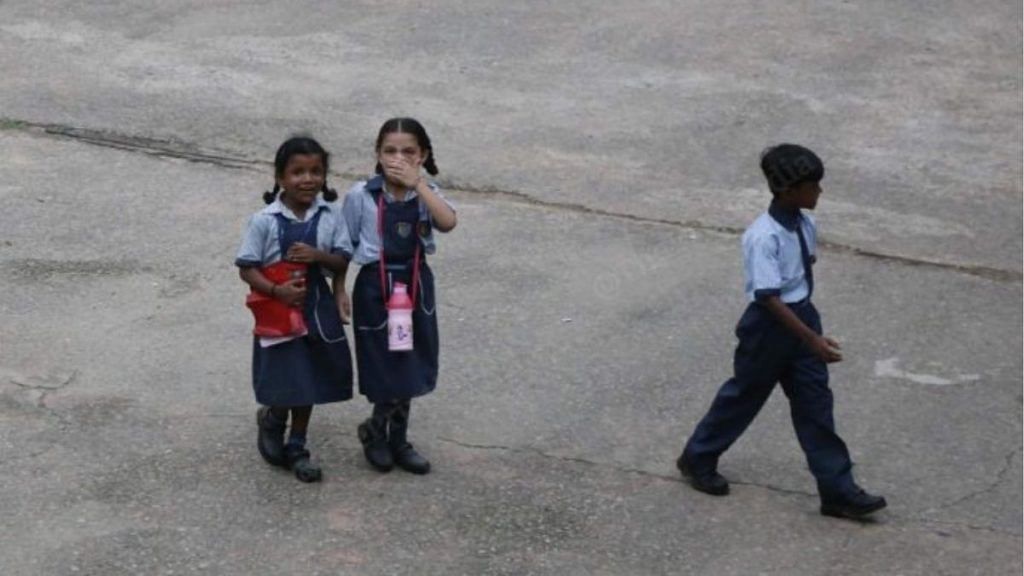It wasn’t the best of times, and it continues to be the worst of times. The power dynamics of a social group keeps its members in line, avoiding collapse. In the family unit, ‘children’ come at the bottom of the power hierarchy. Moreover, culturally in south Asia, you are considered a ‘child’ for much too long, you are expected to have no autonomy over your life decisions and privacy is for everyone to share.
The pandemic unfolded as an unexpected social experiment for the entire world. Looking at it from the outside, it seemed eerie and ironic. People lost their jobs, their homes, and their minds. Suicide rates went up along with domestic abuse, child abuse, child marriages and depression.
In the past two years, I saw my best friend maintain a steady, monotone voice when she told me her father passed away and that she was hoping to see her mother discharged from the ICU soon. I saw another friend shut down as their personal data got stolen leading to blackmail and harassment by a faceless stranger online; struggling through it alone because telling their family was not an option. I had a 12-year-old awkwardly ask me, what do adults fight about? Sharing with me how they mute and unmute their online class matching with the notes of their parents’ argument. I read Instagram blogs of closeted kids feeling cemented in the walls, struggling to express themselves more than ever before.
Thinking of my 12-year-old neighbor tiptoeing around the house reminds me of middle school. A senior of mine would start crying nearing the end of the day when dance practice was about to end. There were marks on their wrists that I naively thought were because of dancing. There were marks around their ankles too, hidden by socks on some days and in front of us, on others. Later, I got to know they were not from dancing; the rest remained a mystery that I conveniently forgot; it comes to me now, seven years later when I sit to write; seven years between a kid and a scared adult.
Also read: Nobody knows the fate of our ‘out-of-school’ children. Enrolment data is insufficient
There has been some conversation about mental health of young people in the wake of schools and colleges being shut, exams being delayed, and online classes being exhausting. But the cause of concern is more than missed lessons and exams. With schools and colleges shut, some students have escaped bullying from their fellows and teachers, while others have lost the safe space that their social life and self-expression provided them. Although, schools and colleges have a social structure of their own, they still provide a stimulated sense of control, an escape from difficult paradigms at home. While adults have been in frenzy and dealing with unpredictability, children and young adults have been feeling detained and stuck.
A lot of children have lost touch with their school counselor, the only access they may have to professional help, which, although rarely available in schools, still counts for something. The lack of infrastructure for mental health assistance is factual and becomes even more glaring from the bottom of the food chain, where children stand. Unlike their parents, Generation Z is comfortable and welcoming of professional psychological help, but most still lack the means. It doesn’t help that now they are under supervision 24/7.
Also read: Obesity, psychological trauma — why experts say it’s high time we send kids back to schools
With the whole world coming down to its knees, the problems of kids and young adults seem first worldly, since they are economically non-contributing members.
But this will come back to haunt us, as generations carry trauma of war, economic collapse, partition etc. This generation will have skeletons of its own, neatly tucked away, repressed to avoid jump scares. Last June, seeing a pile of burning leaves, my brain identified it as a pyre before it could conclude it to be the handy job of the gardener. The mounds of mud in a YouTube short video were instantly skipped assuming they were graves. Coming across the same video again, I found it to be from a sustainable farm somewhere.
Losing the escape of our social lives has disturbed our equilibrium. Even the 10 minutes spent at the metro station talking to a friend or stranger or doing nothing were important for our sanity, which we couldn’t see then. I wonder what we are missing right now. There ought to be some battle scars we are missing. How can so many deaths, so much pain and suffering just slip into the pages of history without a (physical) ruin left behind to remind us of the bodies that were not burned and those that didn’t get space to be buried?
Aakriti Adhikari is a student at Mata Sundri College for Women, University Of Delhi. Views are personal.
